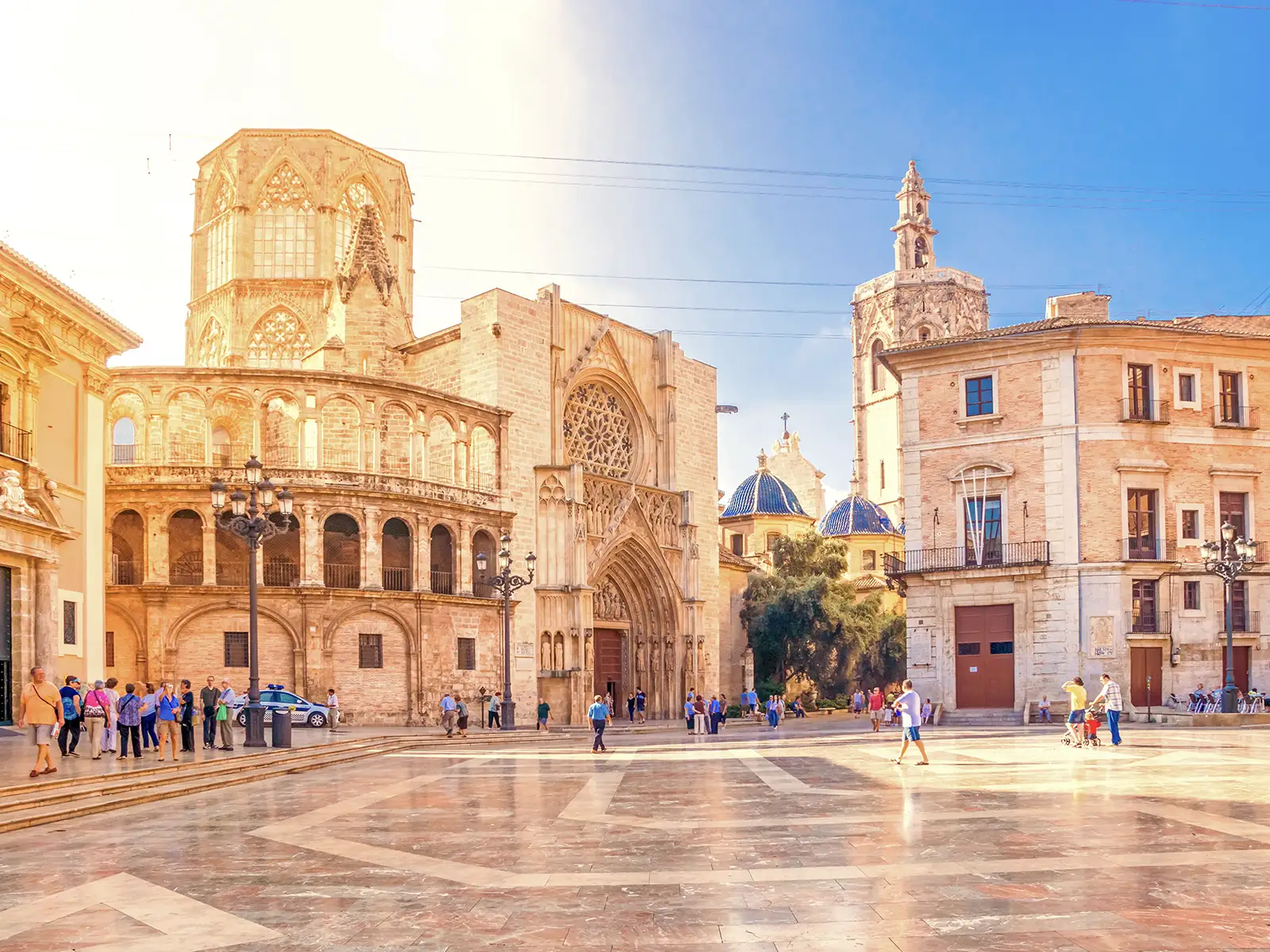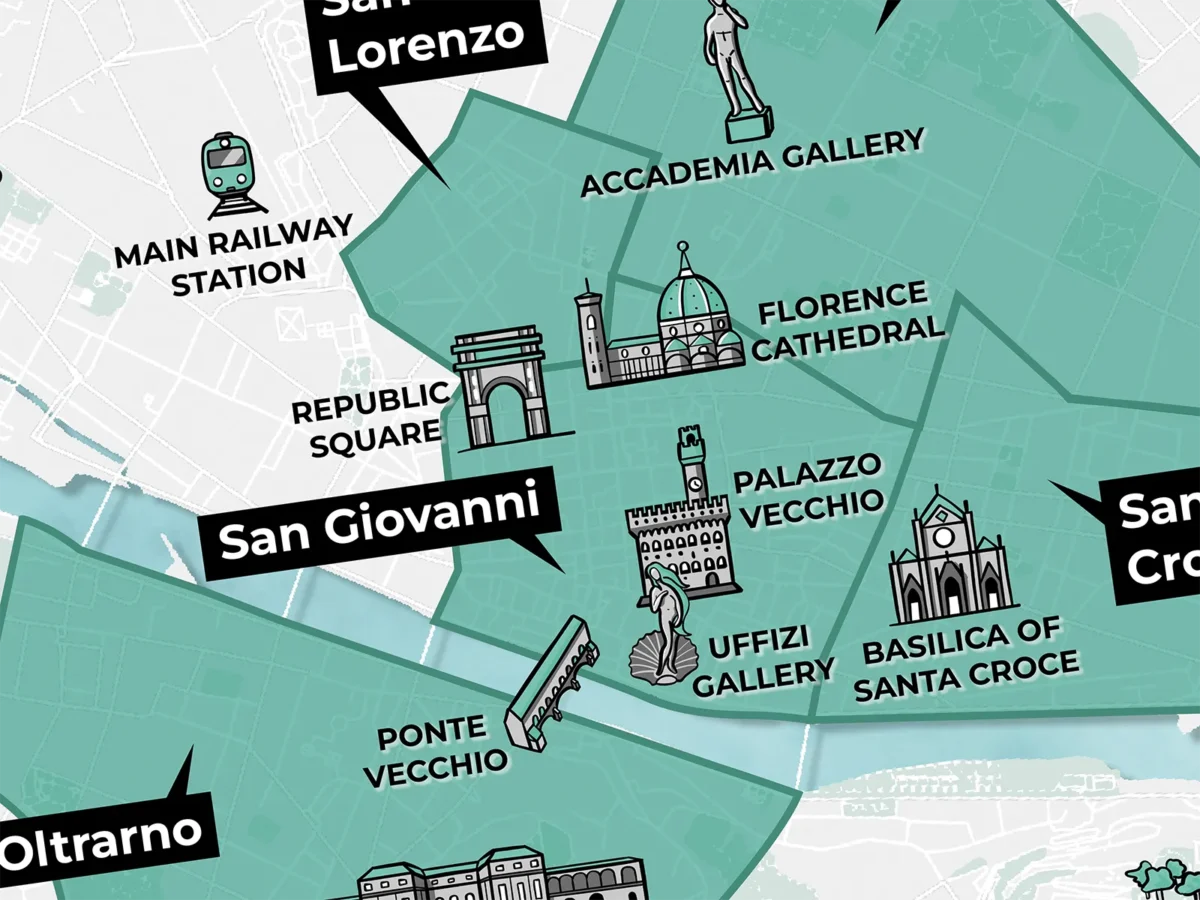20 Most Stunning European Cities You’ll Want to Visit
This post may contain affiliate links, including from Amazon and other trusted partners. If you click a link and make a purchase, we may earn a small commission at no extra cost to you. That said, we only recommend products and services we genuinely use and love. Learn more in our Privacy Policy page.
Not sure where to go next in Europe? Start here with our favorite cities across the continent, picked from years of travel.

With over 800 cities across Europe, choosing where to go can feel like a bit of a minefield. You want the kind of place that makes you think, “That was absolutely worth it”, not “Nice, but I wouldn’t come back”. The truth is that some cities look better on Instagram than they feel in real life.
After travelling to more than 50 countries and exploring hundreds of cities, we’ve figured out what actually makes a place stick with you. Some shine through their history, others with food, art or just that unforgettable atmosphere. The best ones have a bit of everything.
This handpicked list includes both iconic must-sees and a few cities that surprised us in the best way. So whether you’re into history, food, culture, coastal views or nightlife, you’ll find a city here that fits the bill.
If you’re planning a Europe trip or searching for your next city break, this guide is all about places that actually live up to the hype. No fluff, just real recommendations based on where we’d happily go back to. And to help you narrow things down, we’ve also included a quick comparison table at the end so you can match each city to your travel interests.
This post may contain affiliate links, including from Amazon and other trusted partners. If you click a link and make a purchase, we may earn a small commission at no extra cost to you. That said, we only recommend products and services we genuinely use and love. Learn more in our Privacy Policy page.
Short on time?
Here are our recommended European cities by interest:
Best overall city for first-time visitors to Europe: London – Big on history, culture and atmosphere, with something for every type of traveller
Planning a European road trip? Click here to compare rental car prices across Europe.
20 Best European Cities to Visit
Choosing the most beautiful place in Europe is nearly impossible. There are so many amazing places to explore! Here are the ones we love the most:
1. Paris, France
Best European city for art lovers
What makes the city special? A blend of historic landmarks, world-class art, and a café culture unlike anywhere else.


If you’re visiting Europe for the first time, Paris is a city you can’t skip. We’ve been multiple times, and it never gets old.
With its beautiful architecture, charming streets, and world-class museums, there’s so much to take in. Iconic landmarks like the Eiffel Tower and the Louvre make it one of the most recognisable cities in the world.

Paris is home to some of the best restaurants and cosiest cafés, so if you love food, you’re in for a treat.
We highly recommend spending time in Montmartre. You’ll get stunning city views from the steps of Sacré-Cœur while exploring the area’s artistic history.

To make the most of your trip, take a half-day trip to the Palace of Versailles, just a 40-minute train ride from Paris.
You can walk through the extravagant Hall of Mirrors and wander the vast gardens there. Oh, and visit Marie Antoinette’s retreat, The Queen’s Hamlet. This life-size, storybook-like village was built for her to escape the life at court, and it was one of our favourite spots in Versailles.


Did you know? The Louvre is the largest museum in the world by exhibition space, with over 35,000 works of art. Estimates suggest it would take over 100 days to see every piece!
2. Prague, Czech Republic
What makes the city unique? A fairy-tale old town with Gothic architecture and one of Europe’s best beer scenes.
Prague feels like it’s straight out of a fairy tale, which is why we think it’s one of the best European cities to visit, especially if it’s your first time in Europe.
Explore the charming town square of Prague’s Old Town and Prague Castle, one of the largest castle complexes in the world. The Charles Bridge is another spot you won’t want to miss (it’s one of the city’s most iconic places!).

If you’re after the perfect sunset view, head over to Letná Park. We also loved the quieter neighbourhood of Mala Strana. It’s charming and filled with history.
And don’t skip out on tasting traditional Czech cuisine. Goulash and trdelník are some of the must-tries.

Prague is full of iconic landmarks, but we also recommend checking out its lesser-known gems, like the medieval underground tunnels or the Speculum Alchemiae Museum. It’s a fascinating spot to learn about Prague’s rich history and its ties to alchemy.

Did you know? Prague’s Astronomical Clock, which has been running since 1410, is the oldest operating clock of its kind in the world.



Read more about Prague: Best things to do in Prague, Where to stay in Prague
3. Budapest, Hungary
Best European city for low-budget travellers
What makes the city unique? Hot springs, grand architecture, and ruin bars set in abandoned buildings.
Budapest is one of those cities that surprises you with how much there is to see and do.
We’d recommend starting with Buda Castle, a UNESCO World Heritage Site with some of the best views in the city. From there, head over to Fisherman’s Bastion. Its towers look like something out of a fairytale.

Then, of course, there are the famous thermal baths. You can soak in the mineral-rich hot springs at Széchenyi or Gellért, both of which are stunning inside and out.
Oh, and you can’t leave without crossing the iconic Chain Bridge, linking Buda and Pest.

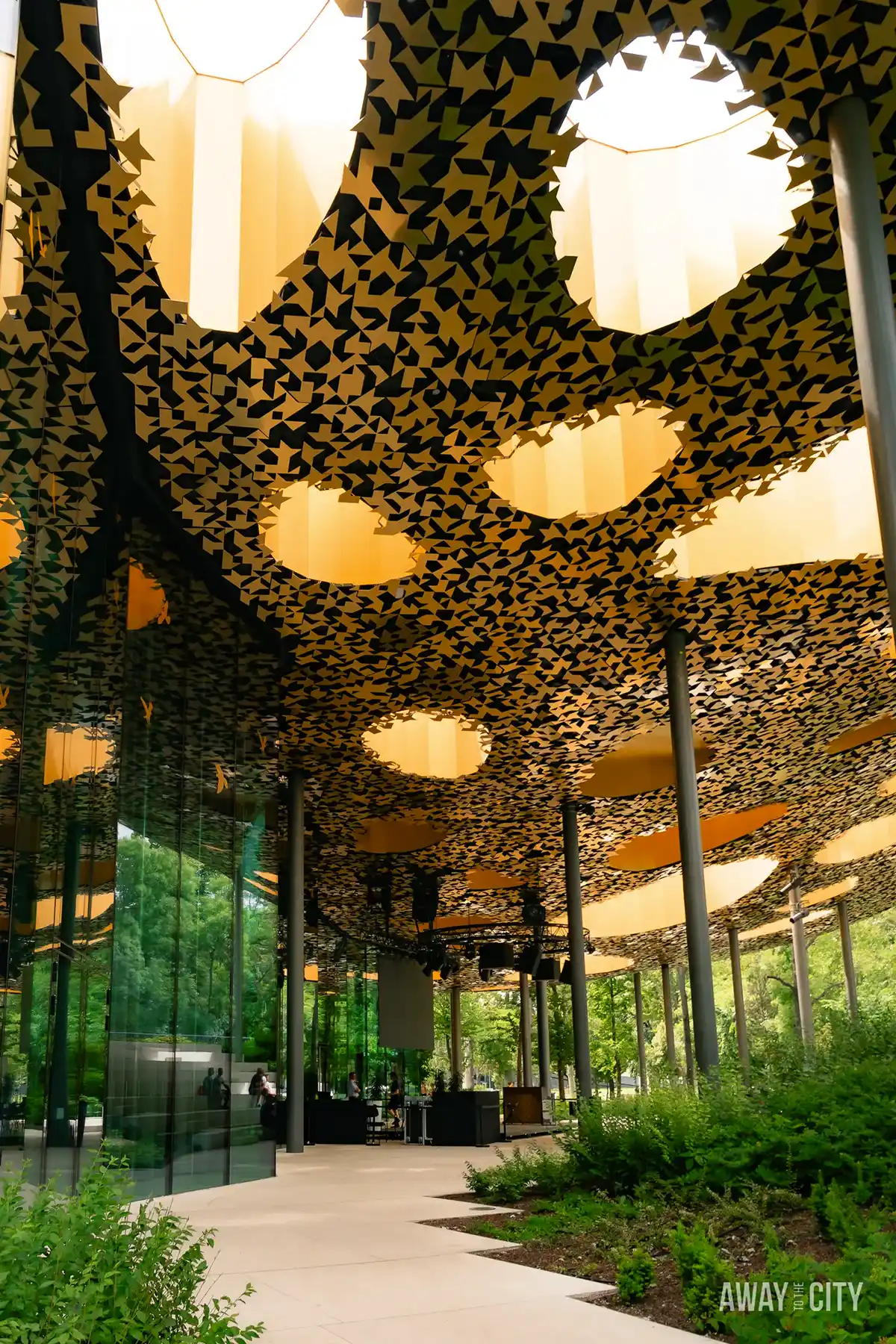

Did you know? Budapest sits on over 120 thermal springs, making it one of the most spa-filled cities in the world!
The Jewish Quarter is another must-see, with its one-of-a-kind ruin bars set in abandoned buildings. It’s the perfect spot to grab a drink in a setting you won’t find anywhere else.
And of course, don’t forget to try some local dishes like goulash and chimney cake. They’re well worth it.

For something truly impressive, tour the Hungarian Parliament Building. It’s easily one of the most impressive government buildings in the world.

Read more about Budapest: Best things to do in Budapest
4. Florence, Italy
What makes the city unique? The birthplace of the Renaissance, charming piazzas, and renowned museums.
If you’re into art, architecture, and history, Florence should definitely be on your list! The dome of Florence Cathedral (Santa Maria del Fiore) is probably one of the city’s most recognisable top attractions.
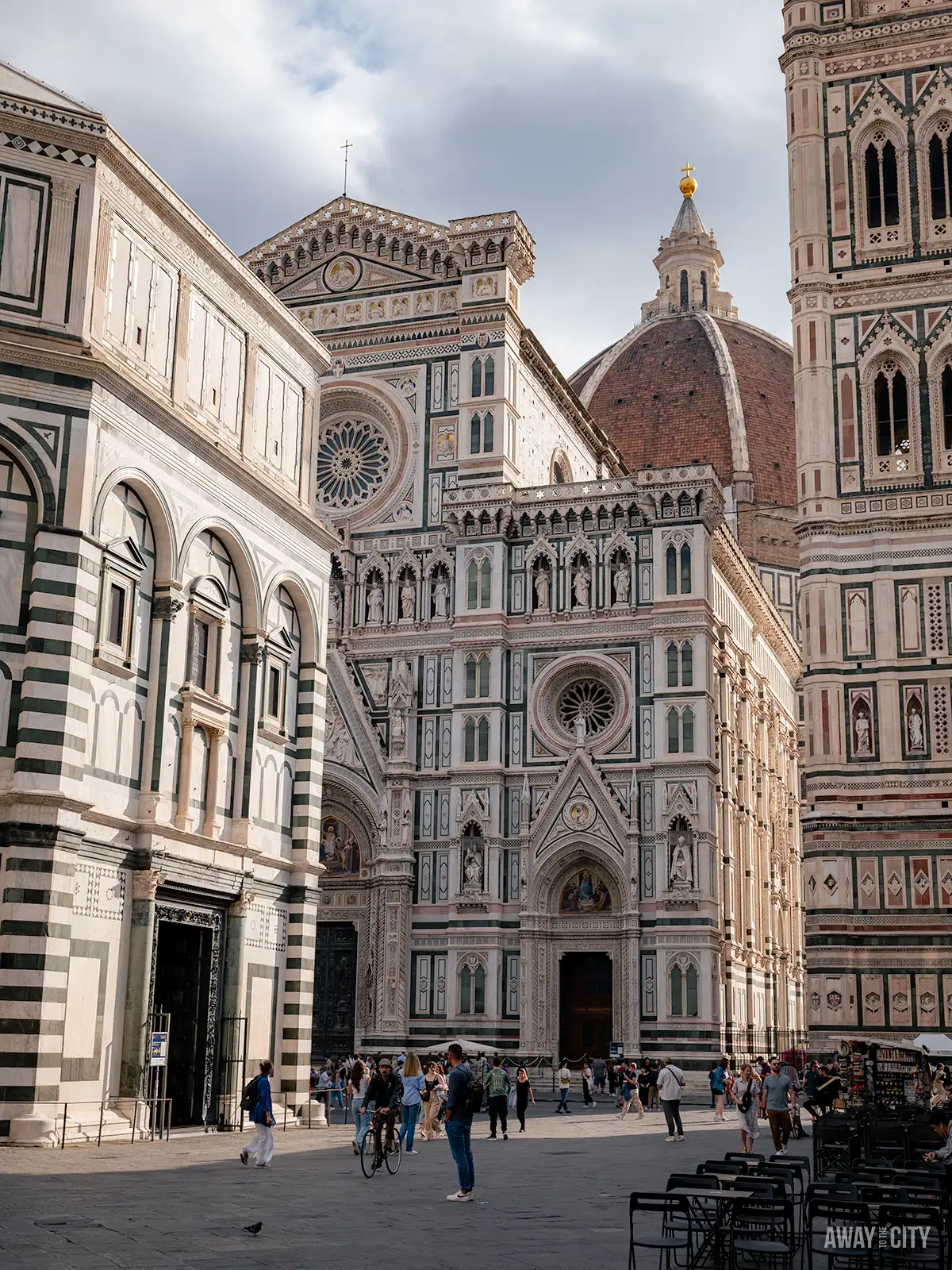
The best way to experience Florence is by exploring its exceptional museums. The Uffizi Gallery is home to masterpieces by Botticelli, da Vinci, and many others. If you’re a fan of Michelangelo, the Galleria dell’Accademia is essential too, especially to see his famous statue of David.

Did you know? Florence was the first city in medieval Europe to have paved streets, dating back to 1339!
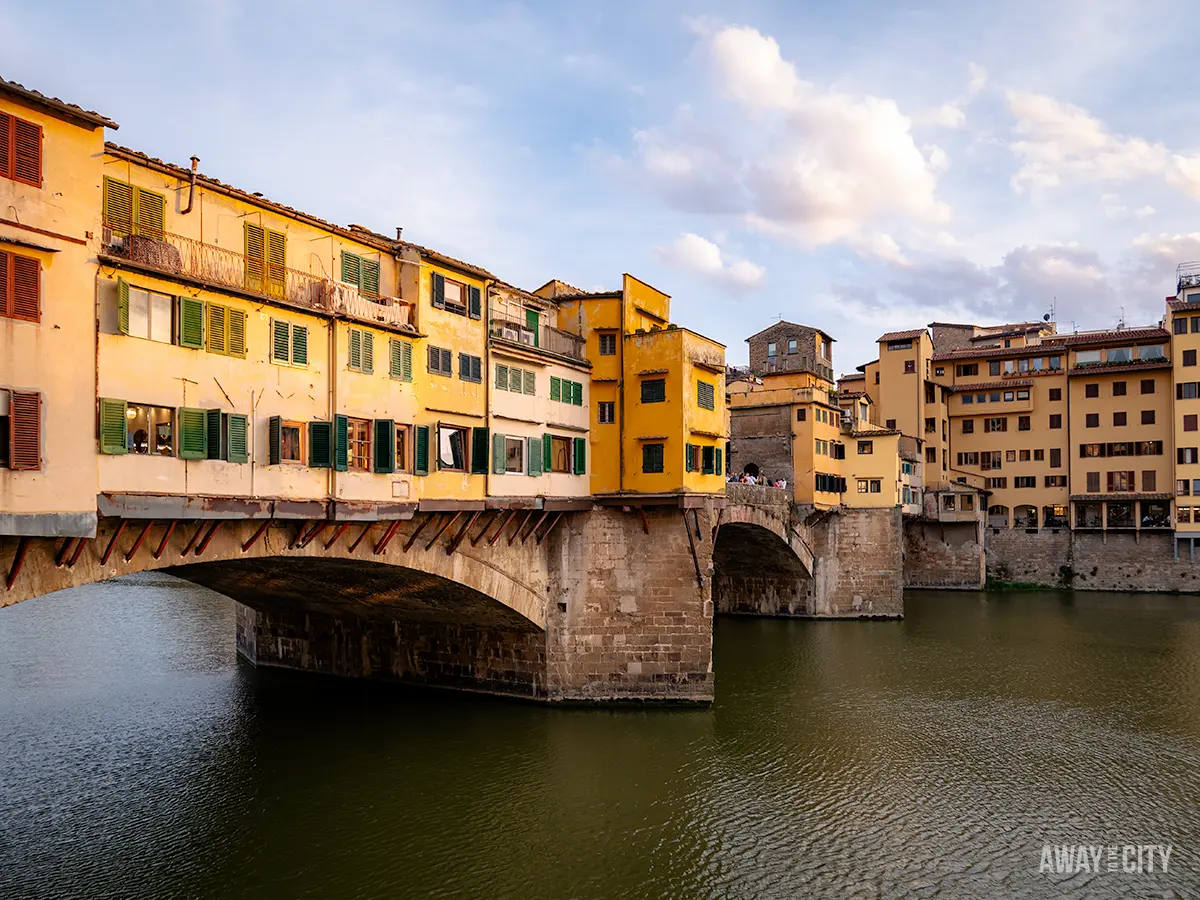


Our top tip: While many people head to the Florence Cathedral for panoramic views, we recommend climbing the Arnolfo Tower instead. The views are even better, and there are fewer crowds!
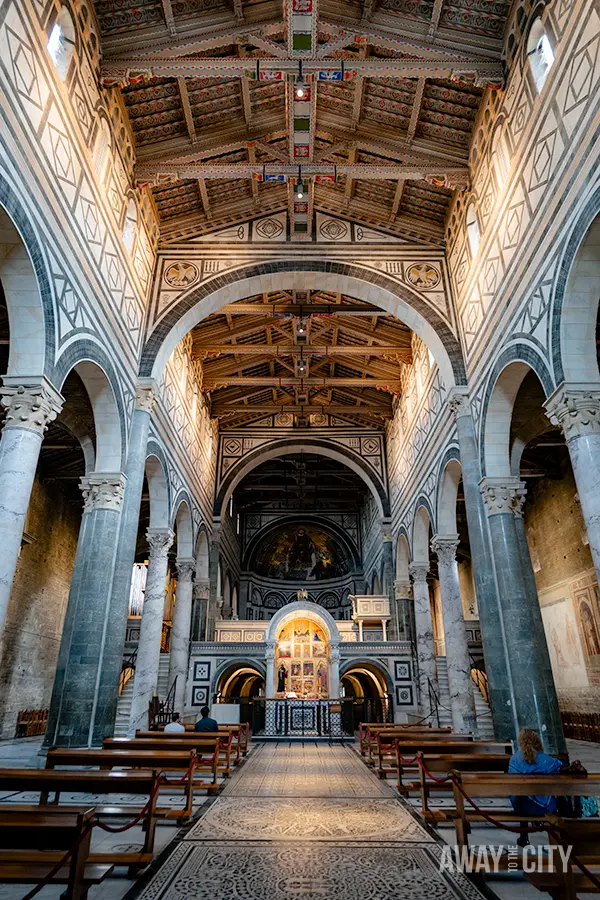
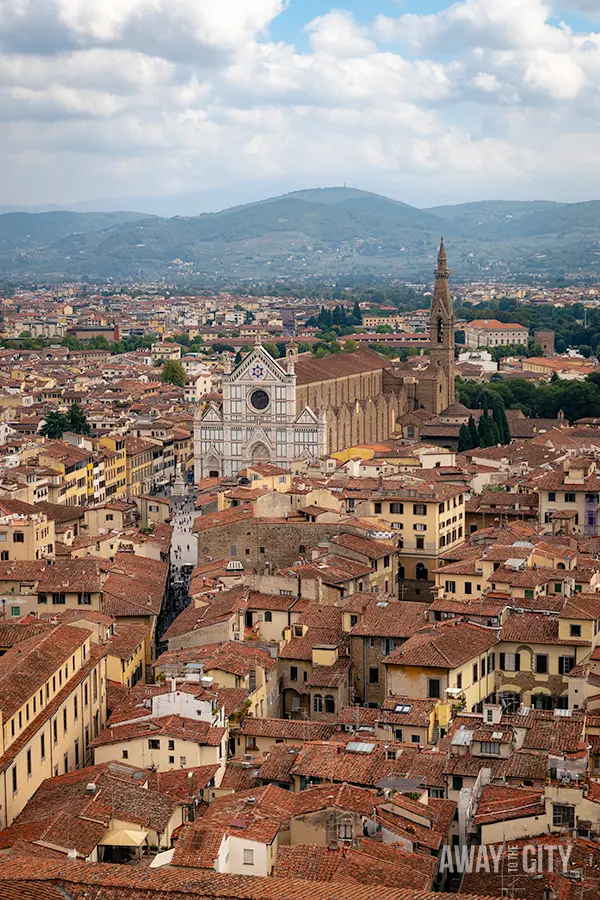
Make sure to take a stroll across the historic Ponte Vecchio, a bridge with jewellery shops and artisan stores. Basilica of Santa Croce is another spot you can’t miss. It’s the place where famous Italians like Michelangelo and Galileo are buried.

Read more about Florence: 2-day Florence itinerary, Where to stay in Florence
5. London, United Kingdom
Best European city for foodies
What makes the city unique? A mix of historic and modern landmarks, diverse neighbourhoods, and an unrivalled theatre scene.
London is one of the most exciting cities in the world, and after living here for over ten years, we still find new things to love. From iconic sights like Big Ben and Tower Bridge to Buckingham Palace and London’s many hidden gems, there’s always something happening.

If you’re into food, you’re in for a treat. London’s dining scene is one of the most diverse anywhere, with Michelin-starred restaurants, buzzing street food markets, and cosy pubs serving classic Sunday roasts. You could eat somewhere different every day and barely scratch the surface.
Visiting during the winter months? London is one of the best cities to experience Christmas. The festive lights, Christmas markets, and seasonal ice rinks make it feel like a holiday movie set. Check out our London Christmas guide to see why it’s such a magical time to visit!



And if you love theatre, you can’t miss the West End. London is one of the top theatre cities in the world, right up there with Broadway in New York. From long-running classics like The Lion King to new hits like Hamilton, there’s always a great show to see.

Did you know? Big Ben isn’t the name of the tower. It’s actually the name of the massive bell inside!

When you need a break from the crowds, head to one of the city’s many green spaces. Hyde Park is a classic choice, but we also love Kew Gardens for a quiet afternoon.

Read more about London: Best things to do in London, Where to stay in London
6. Venice, Italy
What makes the city unique? Stunning canals, romantic gondola rides, and impressive Renaissance architecture.
Spread across 118 small islands and connected by over 400 bridges, Venice is one of the most unique cities in Europe. Walking along the canals, you’ll quickly see why it’s been a popular destination for centuries.

A gondola ride might be touristy, but it’s one of those classic Venice experiences you’ll always remember. We also love taking the vaporetto (water bus) along the Grand Canal. It’s a budget-friendly way to soak up incredible views.


St. Mark’s Basilica and the Doge’s Palace are absolute must-sees. The architecture is breathtaking, and the views from the top of St. Mark’s Campanile are worth the climb.
But don’t just stick to the main sights; get lost in the quieter streets of Cannaregio or stop for a spritz in Dorsoduro.

And, of course, the food. Venetian cuisine is something special, from creamy seafood risotto to cicchetti (Venetian tapas) at a cosy bacaro. Grabbing a gelato and wandering along the canals is the perfect way to end the day.

Did you know? Venice is sinking at a rate of 2 millimetres (0.08 inches) per year due to rising sea levels. It might not sound like much, but experts believe parts of the city could be underwater within a century.
7. Lisbon, Portugal
What makes the city special? A city of seven hills with stunning viewpoints, historic trams, and a vibrant Fado music scene.
The colourful tiled buildings, steep streets, and views over the Tagus River make Lisbon one of the most beautiful cities in Europe.
There’s a good mix of historic sites, stunning beaches nearby, and plenty of things to do, especially if you love history, food, or just soaking up the atmosphere.

You’ll want to hop on tram 28 at least once. It’s an easy way to see the city and saves you from climbing some of those hills. Alfama and Bairro Alto are brilliant areas to explore, with narrow alleys, local cafés, and some of the best Fado music you’ll hear.

We’d highly recommend a day trip to Sintra if you have time. Sintra is famous for its fairytale-like castle, and we ended up spending an entire day there and loved it!

Did you know? Lisbon’s iconic yellow trams have been running since 1873 and were originally horse-drawn!
8. Stockholm, Sweden
What makes the city unique? A rare mix of Viking history, medieval streets, and sleek modern urban planning.
Stockholm is the capital city of Sweden, known for its beautiful mix of medieval and modern architecture, as well as its natural beauty.


You can explore many impressive museums and galleries in Stockholm.
Our personal favourite is the Vasa Museum, where a nearly fully intact 17th-century warship is on display. The ship, which is four stories tall and designed to accommodate a crew of 450 men, sank on its maiden voyage in 1628.


Did you know? Stockholm is built on 14 islands, earning it the nickname “Venice of the North”.
Additionally, we highly recommend spending some time in Gamla Stan, the Old Town of Stockholm. It’s one of the largest and best-preserved medieval city centres in Europe.
Don’t miss the Royal Palace of Stockholm, one of the largest palaces in Europe, which is worth checking out for its grandeur and historical significance.
9. Dubrovnik, Croatia
What makes the city unique? A beautifully preserved walled city, dramatic coastal scenery, and Game of Thrones filming locations.
Dubrovnik, often called the Pearl of the Adriatic, is one of those places that feels almost too perfect to be real. We were blown away by its Old Town, a UNESCO World Heritage site, packed with baroque architecture and shiny limestone streets.


One thing you have to do is walk the medieval city walls. We were hesitant at first because of the admission fee, but honestly, it turned out to be the best thing we did in Dubrovnik. The views over the terracotta rooftops and the Adriatic are absolutely worth it.
If you’re a Game of Thrones fan, you’ll instantly recognise Dubrovnik as King’s Landing. Walking through these historic streets, it’s easy to see why filmmakers chose it as the backdrop for such an iconic setting.


Did you know? The city walls of Dubrovnik were so strong that they were never breached in medieval times!
10. Barcelona, Spain
What makes the city unique? Gaudi’s whimsical architecture, lively beaches, and a buzzing tapas and nightlife scene.
Barcelona is a beautiful city that always feels alive, no matter when you visit.
We love how you can spend the morning exploring Gaudi’s mind-blowing creations, like the Sagrada Familia and Park Güell, and then head straight to the beach for some sun. Barceloneta Beach is one of the best spots to unwind, and the best part? It’s just a short metro ride from the city centre.

Oh, and if you’re into food, you’ll be in heaven. From mouth-watering tapas to fresh seafood, there’s no shortage of places to grab a bite. Just be prepared to eat late: locals typically don’t have dinner before 9pm!



Did you know? Antoni Gaudí’s masterpiece, the Sagrada Familia, has been under construction for over 140 years and still isn’t finished!
11. Seville, Spain
Best European hidden gem
What makes the city unique? Passionate flamenco performances, Moorish-influenced architecture, and lively tapas bars.
Seville is one of our favourite Spanish cities, and we’re sure it’ll become one of yours too!
Start your trip at the iconic Setas de Sevilla, also known as the Metropol Parasol. It’s hands down our favourite spot in Seville! This impressive wooden structure offers stunning panoramic views of the city.

After that, make your way to Casa de Pilatos, a beautiful mansion full of stunning tilework.
Begin your journey at the iconic Setas de Sevilla (our favourite place in Seville!), also known as the Metropol Parasol. This impressive wooden structure offers panoramic views of the city. Then, explore Casa de Pilatos, a hidden gem filled with stunning tilework that reflects Seville’s rich history.



Our top tip: If you’re planning a visit, try to avoid the hottest months. Seville’s warm temperatures can make it quite uncomfortable, especially in the peak summer months.
If you’re after a peaceful escape, head to Parque de María Luisa. In our opinion, it’s one of the most beautiful parks in the world. This is also where you find Plaza de España, Seville’s most famous square.

And no trip to Seville is complete without visiting the breathtaking Catedral de Sevilla. It’s a UNESCO World Heritage Site and the world’s third-largest church!

Did you know? The Giralda tower was originally a minaret for a mosque before being converted into a bell tower.


Read more about Seville: Best things to do in Seville
12. Porto, Portugal
What makes the city unique? Colourful riverside buildings, world-famous port wine, and a charming old town.
Porto is one of those cities that completely took us by surprise. You get to sip on rich port wine while soaking up the stunning views of the Douro River and the Dom Luís I Bridge.
The historic Ribeira district, with its colourful buildings and steep streets, feels like the perfect place to just take it all in.


Something we really loved was spotting the blue ceramic tiles (or azulejos) that cover buildings across the city. They add so much character and make Porto’s historic architecture even more special.

And if you’re a wine fan, you can’t leave without touring one of the port wine cellars. It’s such an interesting way to learn about the region’s history.
If you’re after a European weekend trip with fewer people than Lisbon but just as much charm, Porto is a great choice.

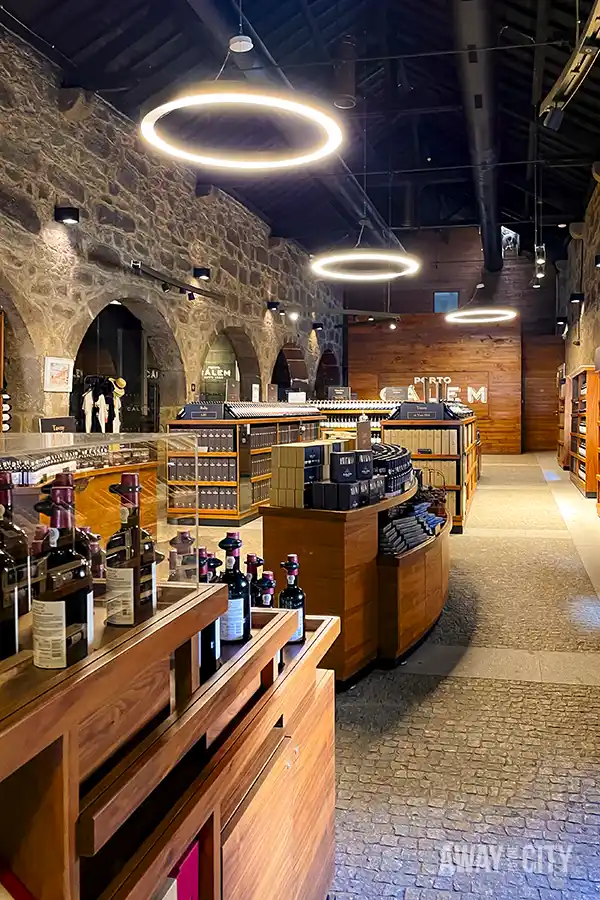

Did you know? The blue tiles (azulejos) covering Porto’s buildings were originally inspired by Moorish designs from the 13th century.
13. Vienna, Austria
Best European city for culture enthusiasts
What makes the city unique? Elegant imperial palaces, classical music heritage, and some of Europe’s best coffeehouses.
Vienna is a dream for culture lovers. It’s home to famous composers like Mozart, Beethoven, and Strauss. The Vienna State Opera is a must if you’re into classical music. If architecture is more your thing, you’ll love St. Stephen’s Cathedral and the grand Schönbrunn Palace.

The city’s coffee culture is legendary, and you can’t leave without stopping at a traditional coffeehouse. We always make time for a slice of Sachertorte with a proper Viennese coffee.
What really stands out is Vienna’s connection to the Habsburg Empire and Empress Sissi. Visiting the Imperial Palace (Hofburg), where she once lived, gives you a sense of what life was like in the royal court.



Did you know? Vienna’s ball season is a huge deal, with over 300 glamorous events each year, including the world-famous Vienna Opera Ball. It’s one of the most prestigious balls in the world.
Vienna is also one of the world’s greenest cities, with nearly half its area dedicated to green spaces. You’ll find plenty of parks and gardens to relax in, from Stadtpark to the Schönbrunn gardens.


Read more about Vienna: Interesting facts about Vienna, What to eat in Vienna, Where to stay in Vienna
14. Athens, Greece
What makes the city unique? Ancient ruins, a mix of history and modern life, and incredible Greek food.
As the birthplace of democracy and Western civilisation, Athens is packed with fascinating sites!
The Acropolis is one of the city’s main attractions, and if you love history as much as we do, you’ll want to see it up close. The Parthenon and other ancient temples are stunning!


The old town area of Plaka is a great place to explore, with its charming streets, local shops, and traditional tavernas.

Our top tip: One of the best views of the Acropolis is from the rooftop bar at A for Athens. It’s the perfect spot for a drink while soaking in the view of the city below.

For a deeper look at Athens’ past, the National Archaeological Museum is a must. It’s the largest in Greece and has an incredible collection of artefacts that give you a better understanding of the city’s ancient history.

Did you know? The Parthenon wasn’t always the white marble structure you see today. It used to be decorated with colourful paintings, but centuries of weathering have stripped it away.
15. Valencia, Spain
What makes the city unique? A mix of futuristic architecture and historic charm, fantastic Mediterranean beaches, and delicious paella.
Valencia doesn’t always get the same attention as Madrid or Barcelona, but honestly, that just makes it even better to visit. It’s a great place to soak up Spanish culture, with stunning architecture, sandy beaches, and the best paella you’ll ever eat.

Start in the historic centre, where you’ll find grand buildings, cobbled streets, and plenty of local cafés where you can sit back and people-watch.
Then, head over to the City of Arts and Sciences. This futuristic complex is one of the city’s most famous sights, and it’s even more impressive in person.


One of our favourite spots has to be the Turia Garden. Once a river, it’s now a vast park running through the city, making it perfect for a walk, a bike ride, or even just a quick break from sightseeing. You’ll love how peaceful it feels, even though you’re still in the middle of the city.


Did you know? Valencia is the birthplace of paella, but locals don’t usually eat seafood paella. It’s traditionally made with rabbit and chicken!
16. Bruges, Belgium
What makes the city unique? A fairy-tale medieval city with picturesque canals, cobblestone streets, and world-class Belgian chocolate.
Although Bruges is a small city with a population of less than 120,000, it’s full of charm.
The medieval buildings, canals, and cobblestone streets make it feel like you’ve stepped straight into another era. It’s the perfect city for a weekend getaway in Europe if you’re looking for something romantic and scenic.

You definitely shouldn’t miss the iconic Markt (Market Square) while you’re there. Climb the Belfry Tower for stunning views over the city!
Bruges is also famous for its chocolate, beer, and waffles, so treat yourself to some of the best local sweets while you’re exploring.




Did you know? The entire historic centre of Bruges is a UNESCO World Heritage site.
Don’t miss the iconic Markt (Market Square), where you can climb the Belfry Tower for panoramic views of the city.
Stroll along the canals and check out the Historium, a museum that tells the story of medieval Bruges. It gives you an insight into the city’s past.



Read more about Bruges: Best things to do in Bruges
17. Rome, Italy
Best European city for history bugs
What makes the city unique? Ancient ruins like the Colosseum and the Roman Forum, plus incredible Italian cuisine.
Rome is the Eternal City for a reason. History is everywhere, from the Colosseum (where gladiators once fought) to the ruins of the Roman Forum (the centre of ancient Rome).
Over in Vatican City, you’ll find St. Peter’s Basilica and the Sistine Chapel. It’s home to some of the most famous religious and artistic sites in the world.

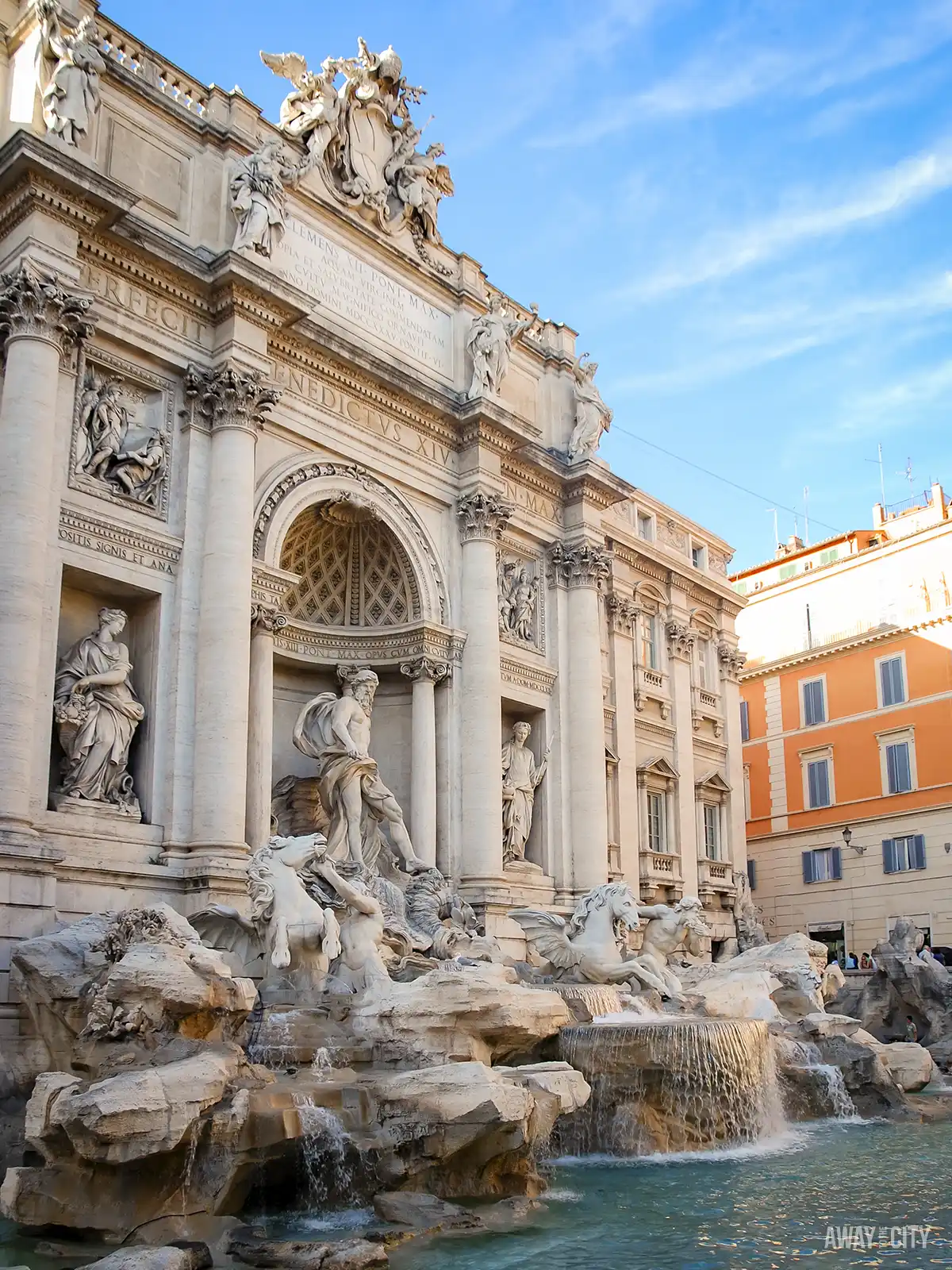
But Rome isn’t just about history. The Trevi Fountain is always packed, but tossing a coin over your shoulder is a fun tradition (even if it won’t make the crowds disappear).
After a busy day, we always head to Trastevere. It’s the best spot for a relaxed evening, with lively piazzas and some of the best pasta in the capital of Italy. You’ll love strolling through the cobbled streets, finding a cosy trattoria, and soaking up the local atmosphere in Piazza Santa Maria.


And let’s be honest, no visit is complete without gelato!

Did you know? There’s a keyhole on Aventine Hill where you can see three countries at once: Italy, Vatican City, and Malta.
18. Edinburgh, United Kingdom
What makes the city unique? A city of legends, dramatic castles, and one of the world’s best arts festivals.
Edinburgh’s medieval architecture and lush greenery make it one of the most iconic places in the UK. As a UNESCO World Heritage Site, the city draws visitors with its charm, and once you’re there, it’s easy to see why.

One of the highlights of any trip is Edinburgh Castle. Sitting on top of an extinct volcano, it offers some of the city’s most breathtaking views. If you love history, this spot should be high on your list.
The Royal Mile is another highlight. This historic street stretches from the castle to the Palace of Holyroodhouse and is full of stories from the past.



Did you know? Edinburgh is home to an underground city, Mary King’s Close. This network of streets beneath the Old Town shows you what life was like for people from the 17th to 19th centuries.
19. Berlin, Germany
Best European city for nightlife
What makes the city unique? Diverse neighbourhoods, thriving arts scene, and a dynamic food scene.
Okay, let’s be honest: Berlin might not win any beauty contests. This is primarily due to World War II, which left around 80% of the city centre in ruins. But what it lacks in beauty, it makes up for in character, history, and energy.

Germany’s largest city is like a living museum, from the remnants of the Berlin Wall (which divided East and West for over 28 years) to the Brandenburg Gate.
It thrives on creativity, from street art and music to underground culture. Plus, there are plenty of parks, forests, and lakes to relax in.


Our top tip: Take a short 30-minute train ride to Sanssouci Palace in Potsdam. It’s a UNESCO World Heritage site and beautiful Rococo palace originally built as a summer residence for the King of Prussia.
If you want to understand Berlin’s complex past, we recommend checking out the Checkpoint Charlie Museum or the DDR Museum, which showcases life in the former East Germany.

Explore the lively neighbourhoods of Kreuzberg and Neukölln, and try some of Berlin’s classic street food, like currywurst, or relax in one of the city’s traditional beer gardens.

Did you know? Berlin has around 170 museums, making it one of the most museum-dense cities in Europe.

20. Rotterdam, Netherlands
What makes the city unique? Modern architecture, a thriving creative scene, and one of Europe’s biggest ports.
Rotterdam may often get overshadowed by Amsterdam, but it’s well worth a visit. In fact, we’d say it’s a hidden gem in the Netherlands, offering a mix of modern charm and quiet beauty that’s often less crowded.

The city is famous for its innovative architecture, and one of its most iconic spots is the Cube Houses. These tilted, colourful cubes are instantly recognisable and make for some fantastic photos.
If you’re a fan of good food, stop by Markthal, a large indoor market with over 100 food stalls and restaurants.


Did you know? Much of Rotterdam lies below sea level, which has led to some incredible engineering feats to protect the city from flooding.
One of our favourite spots in Rotterdam is the Katendrecht waterfront. The area used to be industrial, but it’s now transformed into a lively spot for dining and entertainment.


To experience the city’s bustling port, we highly recommend a boat tour. You’ll get to see one of the busiest ports in Europe up close, which gives you a real feel for the city’s energy.

Read more about Rotterdam: Top reasons to visit Rotterdam, Best things to do in Rotterdam
Find the Right City for You: A Quick Comparison Table by Travel Interests
Still not sure where to start? We’ve pulled together a quick-glance table to help you find the best European city based on what you care about most –whether it’s history, food, scenic views, nightlife or a more budget-friendly trip.
Tick off what matters to you and see which places stand out.

FAQ: Visiting European Cities
Here are some of the most common questions we get asked about visiting Europe’s best destinations.
What are the safest cities in Europe?
If safety is at the top of your list, you’ll want to check out cities like Ljubljana (Slovenia), Vienna (Austria), Zurich (Switzerland), Porto (Portugal), Reykjavik (Iceland), and Copenhagen (Denmark). These cities are known for their low crime rates.

What is the cheapest city in Europe to visit?
Post Office Travel Money ranks Riga in Latvia as the cheapest city in Europe in 2025. Other budget-friendly options include Lisbon (Portugal), Warsaw (Poland), Lille (France), and Zagreb (Croatia).
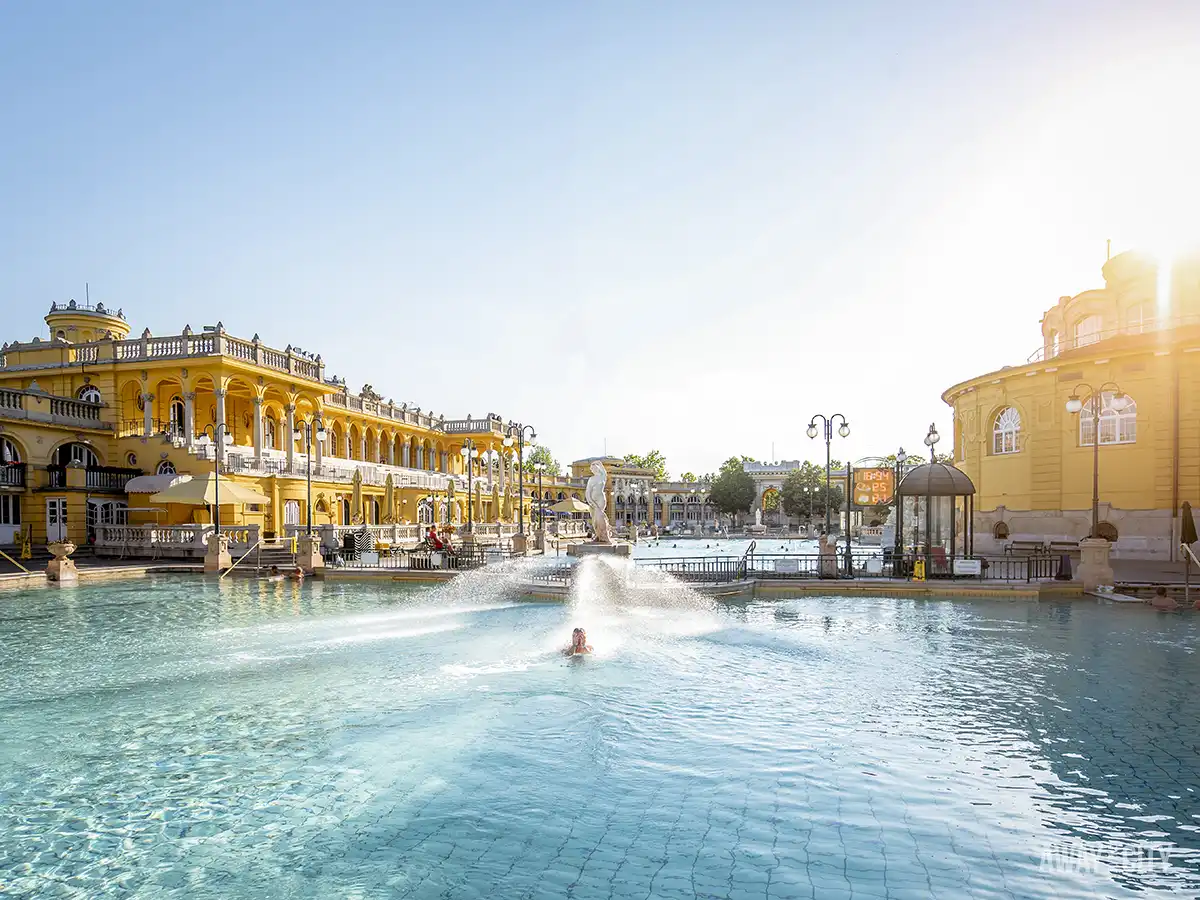
What is the best city to spend 3 days in Europe?
London, Rome, or Paris are fantastic choices for a 3-day European adventure, but the “best” city depends on what you love to see and do. If you’ve explored the classic cities, consider Seville, Budapest, Porto, or Athens.

Which European city has the most to do?
London ranks as the top European city for cultural experiences, according to Resonance’s 2025 report. It’s packed with museums, historical sites, performing arts venues, and other activities.

When is the best time to visit Europe?
Generally, the best time to visit Europe is during the shoulder seasons, which are April-May and September-October. You’ll enjoy mild weather, fewer crowds, and better prices.
But of course, the best time depends on where you’re going and what you hope to do.
For cities like Paris or Berlin, spring and autumn are ideal. If you’re after sun, summer’s perfect for Spain or Greece. For a winter wonderland experience, Europe’s Christmas markets are a must-see, though be prepared for chilly temperatures!
Final Thoughts
These are our 20 favourite cities in Europe, and we’ve explored every single one ourselves. No second-hand tips here. We hope this list gives you plenty of inspiration for your next trip. Whatever you’re into, there’s a city on this list that deserves a spot on your European bucket list.
Ready to start planning? If one of these cities sparked your interest, take the next step with our destination guides. You’ll find tips on where to stay, what to eat, and how to make the most of your trip.
Start with London, Seville, or Budapest – three of the most searched-for European cities on our blog.

